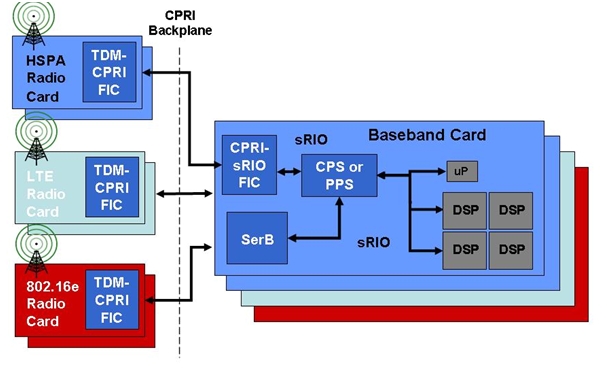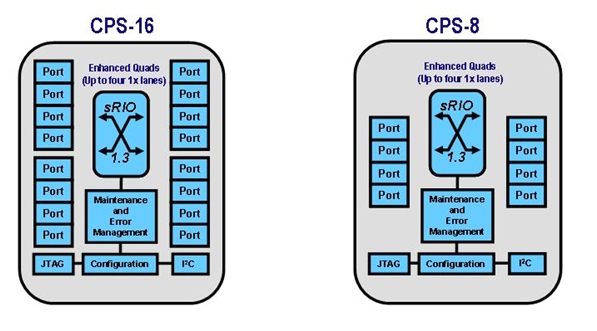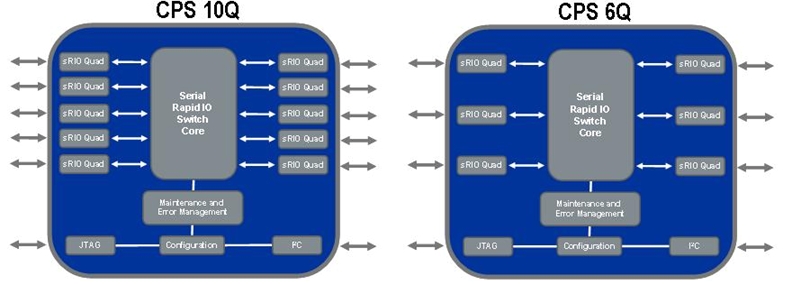How to meet Serial Rapid in 3.5G and 4G base stations
Demand drives wireless infrastructure improvements
In the past few years, both fixed and mobile access markets have shown huge and rapid growth. In the mobile access market, the recent increase in demand for 3G smartphones and PDA devices will continue to drive the growth of wireless data traffic in the enterprise market. In the general user market, it is predicted that the future increase in data traffic will be watching and sharing video downloads. In order to make it easier for customers to find a richer media experience, they can access the network faster and shorten the download time. Service providers will introduce more powerful 3.5G and 4G base stations into their existing wireless infrastructure. .
In the 3.5G and 4G base station architectures, the ever-increasing data transmission rate and the user's requirement to improve the unit's base station capacity are driving the speed of the backplane between the wireless card and the baseband card. This overall increase in bandwidth has gradually increased the interconnection between more DSPs in the standard cluster configuration of the baseband card.
Meet the sRIO needs of a new generation of base stations
In order to adapt to the increase in system bandwidth while minimizing wiring to limit board size, sRIO has become the standard protocol for baseband card architecture selection. As an open standard, sRIO combines high bandwidth efficiency with low overhead packages and intuitive point-to-point support. This combination is an ideal way to support multiple DSPs in baseband applications.
The increasing number of DSPs, application-specific signal processors (ASSPs) and FPGA products that provide sRIO interfaces has created a high-performance, cost-effective, and modular solution for a new generation of base station health ecosystems. Using standard protocols, such as sRIO, brings flexibility to base station architects.

Figure 1: New generation base station architecture.
For any wireless infrastructure, it is a huge challenge for service providers to deploy the appropriate bandwidth for the system site in a cost-effective manner to meet the increasing user bandwidth requirements. The most successful base station manufacturers will provide suppliers with an easily scalable, modular common platform base station architecture to promote reuse across multiple technologies, such as WCDMA, LTE, WiMAX and CDMA2000.
The scalability, modularity, and reusability of the base station architecture are equivalent to the need for a flexible sRIO interconnection solution that can change the number of DSPs between the baseband card and multiple baseband cards. A typical baseband architecture includes an sRIO switch as a collection point between multiple DSPs and other units, such as a control processor, or several FPGAs. If there are multiple baseband cards, they can be connected to another switch or sRIO. SRIO version 1.3 currently supports channel configurations from 1x to 4x per port at 1.25G, 2.5G and 3.125G channel rates. Depending on the system bandwidth and user capacity for any given base station architecture, the combination of 1x to 4x channel ports at different channel rates varies greatly. Universal applications with 1x to 4x channels at 1.25G, 2.5G, and 3.125G channel rates will eventually transition to 5G and 6.25G per channel supported by sRIO version 2.0.

Figure 2: The first generation of central packet switches that meet the needs of high 1x port counts.
The use of sRIO-based CPS facilitates the reuse of the architecture. The CPS series of sRIO switches represent the most extensive port and link interconnection combination and can be applied to any existing standard 3G architecture to 3.5G or even 4G. The CPS series combines the Pre-Processing Switch (PPS) series, including 7 different sRIO pre-processing and enhanced switches, supporting 8 to 40 ports configured from 1x to 4x channels. The CPS series is the lowest power consumption, the smallest package (19x19mm) sRIO converter (CPS-8), and has a high bandwidth, scalable 10-port 4x channel solution (CPS-10Q). The 10-port 4x channel configuration helps designers or architects use 2 CPS-10Qs to expand to all 16-port 4x channels.
CPS series of sRIO switch
The CPS series cards have a series of unique features and functions, making them ideal sRIO interconnect solutions. In the CPS and PPS series, an enhanced four-channel serial deserializer (SerDes) is used to help designers have a high degree of flexibility to match the right number of 1x to 4x channels for their applications. Each enhanced four channel can be used to implement a 4x port or four 1x ports, supporting any two channel rates within a four channel. Another useful function is that each port has a packet tracking function.
The packet tracking function helps to listen to the data flow of the user-defined target port, which is beneficial to internal and on-site diagnosis. The package identified by the tracking function can be mirrored, filtered or deleted according to user requirements. In addition, the CPS series achieves the lowest power consumption and eye diagram signal characteristics through the smallest sRIO switch package (19x19mm). The CPS series and PPS series are also compatible with standard 19x19mm and 27x27mm package pinouts, making it easier to replace devices when the architecture changes.
For ease of evaluation and development, the CPS series provides ATCA and microTCA hardware platforms supported by several software development tools. The CPS and PPS series include device access drivers, graphical user interface (GUI) and application programming interface (API).
In addition to pre-processing and enhanced switches, IDT also provides buffer and protocol conversion solutions for the wireless infrastructure market. IDT pioneered the sRIO storage buffer and internal functional interconnect (FIC) devices that enable the conversion of sRIO to the Common Public Radio Interface (CPRI) and the conversion from time domain multiplexing (TDM) to CPRI protocol. Only IDT provides end-to-end sRIO ASSP from baseband to wireless card.

Figure 3: Second-generation CPS that meets the needs of high 4x port counts.
Summary of this article
Due to the growth of the multimedia Internet access rate, the increasing number of PDA and smartphone mobile devices is rapidly driving the growth of mobile data traffic. The continued growth of data traffic requires the deployment of a new generation of base stations that can meet the demand for increased bandwidth. To this end, a new generation of base stations needs multi-core DSP groups connected via sRIO to improve baseband processing capabilities.
All auto filters are designed to prevent harmful debris from entering any parts where air and fluid flows, including your engine, radiator, fuel lines and more. Once a filter is no longer performing its intended function, decreased performance-even engine damage-can result.
When your air filter is dirty, your engine is forced to work harder, resulting in poor fuel economy, higher emissions and, possibly, a loss of engine power. In turn, as a worst-case scenario, a clogged Cabin Air Filter can lead to under-performance of the A/C system, causing weak air flow from the cabin vents. It can also lead to unwanted, unfiltered air in the cabin. As for a mucked-up fuel filter, that`ll land you with a weakened fuel supply to injectors, a reduction in engine power, poor acceleration and lousy fuel economy-not to mention a potential breakdown.
They protect vital car parts by keeping harmful debris at bay so your car runs right. Filters also ensure your car runs more efficiently. The cleaner your filter, the more it allows for the maximum flow of air or fluid through the system. Like a clogged drain, a dirty filter starves the system of the vital air or fluid and makes each system it protects work harder to do its job. Once filters are dirtied, they should be replaced.
it`s recommended that you get your filters replaced every 12 months or 12,000 miles, but check your owner`s manual for specifics about your vehicle`s filter replacement schedules.
Automotive Filter,Car Air Filter,Car Cabin Air Filter, Car Oil Filter
Donguan Bronco Filter Co., Ltd , https://www.broncofilter-cn.com